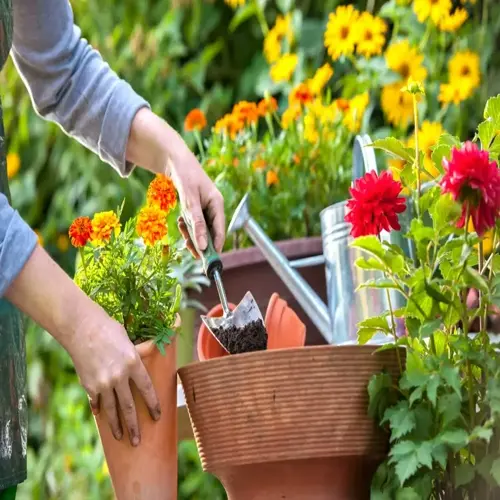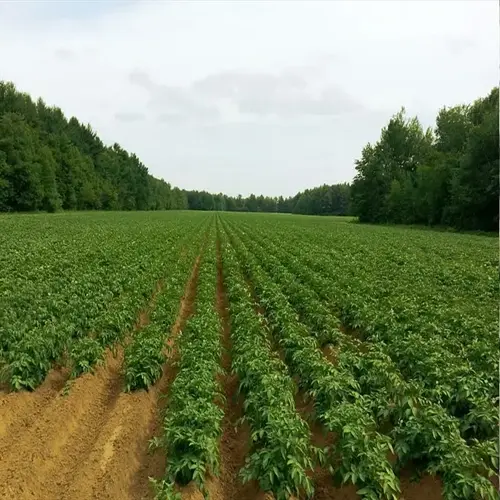When to Plant Carrots: Expert Growing Guide

Written by
Benjamin Miller
Reviewed by
Prof. Samuel Fitzgerald, Ph.D.Know exactly when the right time for planting carrots is, based on frost dates and the soil temperatures.
Prepare the soil deep with 12+ inches of the best compost ratios, so it is home to straight roots.
Plant the seeds shallowly at a depth of about 1/4 inch, so there is moisture-retaining, stone-free soil.
Choose some varieties of carrots, such as Autumn King, for fall planting and Napoli for early spring planting.
Harvest after a light frost when the shoulder of the carrot is about 0.5-1 inch width.
Resist the urge to plant carrots during the hot heat of the summer peak above 85 degrees Fahrenheit for the best results.
Article Navigation
There is nothing quite like taking a bite out of a homegrown carrot directly from your garden. The crunchiness and sweetness make supermarket carrots taste bland. The timing of planting is just as important as soil preparation and variety selection. Get the timing, soil preparation, and variety right, and the carrots should be juicy and full of flavor.
Consider growing a colorful vegetable variety, such as purple Dragon or Happy Yellow Moon carrots, to add a beautiful splash of color to your garden and introduce different flavors to your plate. I've grown these varieties, and they have consistently performed well for me. Use the following guide to achieve consistent harvests from spring to fall, utilizing basic and proven methods.
Harvesting Carrots Perfectly
To determine when to harvest your carrots, check their shoulder width. Check for shoulder widths (or diameters at the soil line) of 0.5-1 inch (1.3-2.5 cm). Once again, visual cues are better than guesstimating their maturity dates. I realized this after harvesting many large, woody carrots over the years; timing is important for a firm, crispy carrot!
Cold weather works wonders with carrots. Light frosts initiate a biochemical process that converts starches into sugars. This naturally sweetens fall harvests. Protect your plants from hard freezes while allowing light frosts to occur. You'll notice the difference in every bite.
Carrots can be stored in various ways, depending on how you plan to use them. For short-term storage, refrigerate. Place unwashed carrots or baby carrots in perforated bags. For long-term storage, pack them in moistened sand in cool, dark places. The ground can effectively keep them fresh for months. I still have carrots from October in my root cellar.
Timing Assessment
- Visual Check: Monitor carrot shoulders emerging above soil; harvest when tops reach 0.5-1 inch (1.3-2.5 cm) width depending on variety
- Days Calculation: Count days from sowing date; most varieties mature between 55-80 days as specified on seed packets
- Frost Advantage: Schedule harvests after light frosts (32-40°F / 0-4°C) when sugars peak but before hard freezes damage roots
Soil Preparation
- Moisture Control: Water bed thoroughly 24 hours before harvest to soften soil and reduce root breakage during pulling
- Tool Selection: Choose a garden fork over shovel to gently loosen soil without piercing carrots below the surface
- Depth Guidance: Insert tools 6 inches (15 cm) away from carrot rows at 45-degree angle to lift soil safely
Harvesting Technique
- Pulling Method: Grasp foliage firmly near crown and twist gently while pulling upward in steady motion
- Breakage Prevention: If tops detach, carefully excavate surrounding soil with hands to retrieve undamaged roots
- Continuous Harvest: Mark succession plantings with dates; harvest only mature carrots while leaving others growing
Post-Harvest Handling
- Top Removal: Trim foliage to 1 inch (2.5 cm) above crown immediately to prevent moisture loss through leaves
- Cleaning Protocol: Brush off loose soil gently; avoid washing until ready to use to maintain protective coating
- Initial Storage: Place unwashed carrots in perforated plastic bags with damp paper towels for refrigerator storage
Long-Term Storage
- Sand Method: Layer unwashed carrots in damp sand-filled containers; store in cool dark locations (34-40°F / 1-4°C)
- Root Cellar: Maintain 95% humidity; check monthly for spoilage and remove affected carrots immediately
- Freezing Preparation: Blanch sliced carrots for 3 minutes then plunge into ice water before freezer storage
Choosing the Best Carrot Varieties
Nantes learned that this crisp, sweet flavor begs to be eaten fresh from the garden. They mature quickly, just in time for summer harvests. Autumn King has deeper, earthy flavors and becomes sweeter after frost, making it great for winter storage. Choose these for winter stews and roasts. Select varieties based on your preferred cooking style for optimal results.
Soil depth is the difference between carrot varieties in your garden. Round varieties, such as Paris Market, can only be grown in 6 inches of soil or in a container. Imperator types (longer varieties) require 12 inches or more of loose, stone-free soil. I discovered this when I had forked carrots growing in my rocky clay soil.
Align your planting schedules with the seasons. Napoli resists significant spring frosts. YaYa resists bolting in the summer because it's heat-resistant. For a special flair, grow Dragon carrots that are purple-skinned with orange flesh, or the solid gold roots of Yellow Moon. The wow factor is magnificent in dishes and beds.
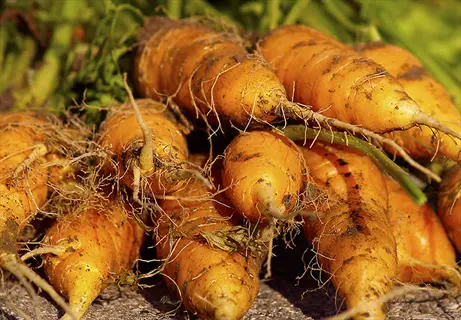
Early Nantes
- Growth Characteristics: This slender 6-inch root vegetable matures in 60 days, performing exceptionally well in both raised beds and container gardens where loose soil conditions prevail throughout the growing season.
- Flavor Profile: Exceptionally sweet and crisp texture makes these carrots perfect for fresh eating straight from the garden or adding crunchy sweetness to salads without requiring additional preparation.
- Seasonal Adaptation: Ideal for spring planting schedules when gardeners aim to harvest before summer heat intensifies and potentially affects root development quality negatively.
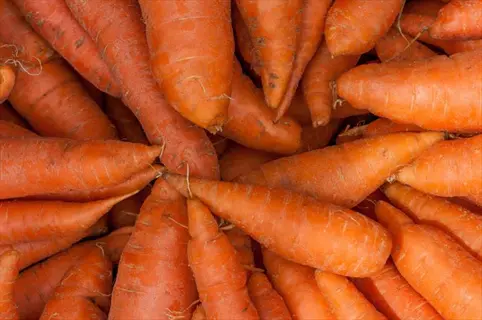
Autumn King
- Growth Characteristics: With 80-day maturity period developing thick 10-inch roots, these storage carrots maintain excellent quality when properly mulched through winter months in cold climate gardens.
- Flavor Transformation: Earthy notes intensify significantly after frost exposure events, transforming these root vegetables into perfect roasting candidates for hearty stews and oven-baked dishes.
- Temperature Tolerance: Demonstrates remarkable hardiness by tolerating temperatures as low as 20°F (-6°C) when gardeners apply protective mulch layers before winter conditions intensify.
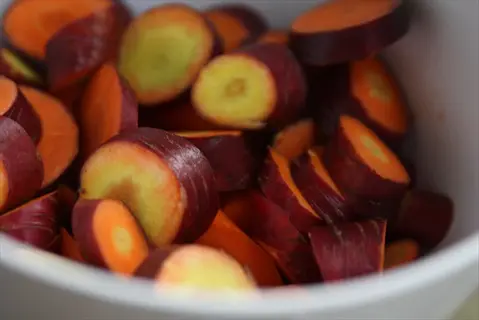
Dragon Purple
- Growth Requirements: Requires deep stone-free soil conditions to properly develop straight 7-inch roots over its 70-day maturation period without developing forked or stunted shapes.
- Nutritional Benefits: Vibrant purple skin and bright orange flesh contain high lycopene levels comparable to tomatoes, retaining antioxidant properties even during cooking processes.
- Visual Appeal: Striking color contrast makes these carrots excellent conversation starters at farmer's markets and visually stunning additions to vegetable platters during social gatherings.
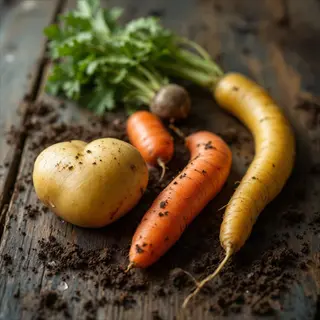
Yellow Moon
- Growth Period: Uniform yellow 7-inch roots require approximately 75 days to reach full maturity while maintaining smooth texture throughout various soil conditions in home gardens.
- Pest Resistance: Naturally repels carrot fly infestations due to significantly lower volatile compound emissions compared to traditional orange carrot varieties commonly available.
- Flavor Distinction: Offers mild buttery taste profile distinctly different from earthy orange varieties, particularly when consumed raw in fresh garden salads.
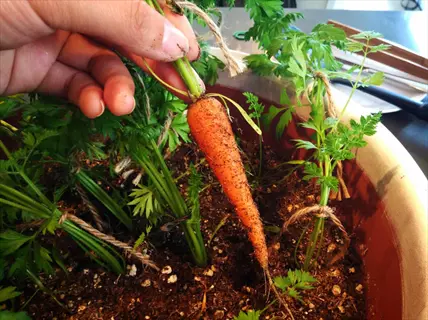
Little Fingers
- Compact Growth: These small 4-inch roots mature in just 55 days, making them ideal for shallow soils, container gardening, and small space vegetable cultivation projects.
- Succession Planting: Perfect for quick crop rotations between other plantings when gardeners sow seeds every 3 weeks throughout the growing season.
- Flavor Consistency: Maintains extra-sweet baby carrot tenderness even when roots slightly exceed typical size expectations, remaining non-woody throughout.

Bolero
- Disease Resistance: Developed specifically to resist common carrot diseases, producing reliable 8-inch blunt-tapered roots consistently over 75-day growth period.
- Storage Capacity: Maintains firm texture exceptionally well, lasting over 5 months in cool humid storage conditions ideal for root cellaring techniques.
- Seasonal Versatility: Performs equally well in both spring and fall planting schedules across diverse gardening zones without bolting issues.
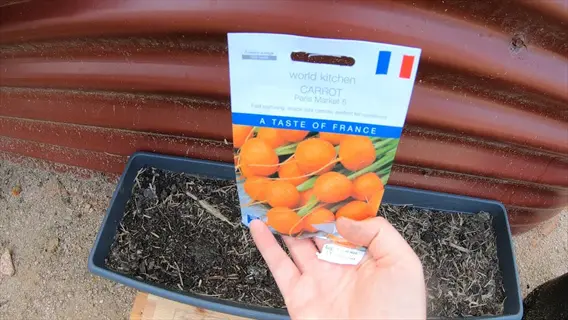
Paris Market
- Container Adaptation: Round 2-inch golf-ball shaped roots thrive in window boxes and small patio planters, needing only 6-inch soil depth for proper development.
- Culinary Presentation: Intensely sweet concentrated flavor profile makes these carrots ideal for whole roasting presentations that maintain visual appeal.
- Rapid Maturation: Reaches harvest readiness in just 50 days, allowing multiple succession plantings throughout the gardening season.

Resistafly F1
- Pest Protection: Hybrid specifically bred with natural repellents against carrot fly infestations, significantly reducing damage without chemical interventions.
- Soil Tolerance: Adapts well to various soil types including heavier clay conditions where longer varieties might struggle with proper formation.
- Flavor Quality: Maintains excellent sweet flavor comparable to traditional varieties despite its enhanced pest resistance characteristics.

Sugarsnax
- Sweetness Level: Exceptionally high sugar content develops during its 68-day growth period, making these carrots particularly popular with children.
- Size Development: Produces consistently long 9-inch roots when grown in deep, stone-free soil beds with adequate moisture throughout the season.
- Storage Performance: Maintains crisp texture and sweet flavor through extended storage periods when kept in proper cool, humid conditions.
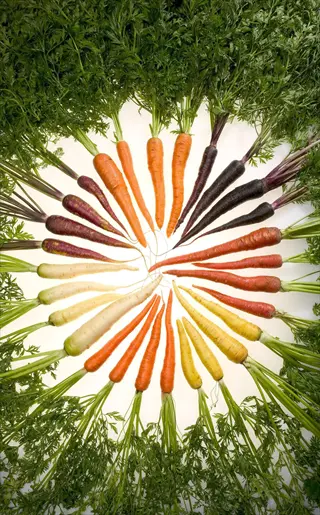
Rainbow F1
- Color Variety: Seed blend producing purple, yellow, red and white roots creating visually striking harvests from single planting sessions.
- Growth Uniformity: Despite color variations, roots mature uniformly in 65-70 days with consistent size and texture characteristics.
- Garden Appeal: Creates excellent opportunities for colorful vegetable displays and children's gardening projects due to visual diversity.
Seasonal Timing
- Spring Varieties: Choose fast-maturing types requiring 50-60 days like Little Fingers before summer heat potentially causes bolting issues.
- Fall Varieties: Select frost-tolerant types such as Autumn King planted precisely 10 weeks before first frost date for optimal development.
- Winter Storage: Prioritize thick-skinned varieties like Bolero with naturally low water content ensuring extended storage longevity.
Soil Conditions
- Shallow Soils: Round varieties including Paris Market develop fully within limited 6-inch depth constraints common in urban gardens.
- Heavy Soils: Shorter types like Danvers tolerate clay conditions better than tapered varieties requiring perfect soil structure.
- Sandy Soils: Longer varieties including Imperator thrive but demand consistent moisture management throughout the growth cycle.
Pest Resistance
- Carrot Fly: Select Flyaway or Resistafly varieties containing natural repellent compounds that deter common infestations effectively.
- Leaf Miners: Varieties with thicker foliage including Yellow Moon demonstrate significantly reduced visible damage patterns.
- Companion Strategy: Always interplant with onion-family crops regardless of variety selection for enhanced pest protection.
Culinary Use
- Fresh Eating: Crisp juicy types including Early Nantes offer high sugar content perfect for immediate garden-to-table consumption.
- Cooking Applications: Earthy varieties like Autumn King maintain robust flavor profiles during roasting or steaming processes.
- Pickling Projects: Small uniform roots such as Little Fingers maintain essential crunchiness throughout vinegar brining processes.
Climate Adaptation
- Hot Climates: Heat-resistant varieties including YaYa slow bolting tendencies significantly during temperatures above 85°F (29°C).
- Cold Climates: Frost-tolerant types like Napoli survive effectively under protective snow cover when properly mulched beforehand.
- Humid Regions: Disease-resistant varieties such as Bolero prevent common fungal root issues in moisture-rich environments.
Container Suitability
- Depth Requirements: Select varieties needing under 8-inch depth like Paris Market for successful patio container cultivation.
- Root Structure: Choose compact varieties with minimal taproot development for optimal performance in confined spaces.
- Moisture Needs: Prioritize varieties tolerating consistent moisture fluctuations common in container gardening environments.
Color Preferences
- Visual Appeal: Vibrant purple Dragon carrots create striking visual contrast in garden beds and culinary presentations.
- Nutritional Focus: Deeply pigmented varieties offer concentrated antioxidant benefits from unique phytonutrient profiles.
- Child Engagement: Rainbow blends increase gardening interest among children through colorful harvest experiences.
Harvest Duration
- Continuous Harvest: Select succession-friendly varieties maintaining quality when harvested gradually over extended periods.
- Single Harvest: Choose storage varieties like Autumn King designed for one-time harvesting after full maturation.
- Overwintering Potential: Identify cold-tolerant types that maintain edibility when left in ground through winter.
Seed Availability
- Common Varieties: Easily accessible types like Danvers available at most garden centers each planting season.
- Heirloom Options: Specialty varieties requiring advance ordering for specific color or flavor characteristics.
- Hybrid Selection: Disease-resistant F1 hybrids offering enhanced performance but requiring annual repurchase.
Garden Aesthetics
- Foliage Appearance: Varieties with particularly lush green tops adding ornamental value to vegetable gardens.
- Growth Habit: Uniform upright growth patterns creating tidy garden beds throughout the growing season.
- Color Contrast: Purple or yellow varieties providing visual interest among standard green garden plants.
Preparing Soil for Carrot Success
Envision soil with an ideal texture for carrots like crumbled chocolate cake. Loose, aerated soil that allows roots to grow down without restriction. Experiment with your soil's pH using basic kits from garden centers or the DIY vinegar-baking soda method. Carrots thrive at a pH level of 6.0-6.8. I check mine in the spring to make sure the conditions are optimal.
Adjust your amendments based on the type of soil. Heavy clay soils should be amended with 40% compost and 30% sand. Sandy soils should have 50% compost added without sand. This should be rated by volume, not weight. Pick up soil for spring beds in late fall so winter weather can amend the texture. If amending for fall crops, amend the soil in midsummer.
Align your soil preparation with the seasons. Spring plantings require amended soil, beginning in late fall, to help cycle through freeze-thaw cycles, which naturally break down clumps. Autumn crops begin by preparing beds in midsummer, allowing solarization to kill weeds before amendments are added. Timing can make all the difference.
Soil Testing
- pH Analysis: Use test kits to determine acidity; carrots require 6.0-6.8 pH range for optimal nutrient absorption
- Texture Check: Perform ribbon test by moistening soil and rolling between fingers; clay forms ribbons while sandy soil crumbles
- Timing: Test soil 6 weeks before planting to allow amendment adjustments to fully integrate
Rock Removal
- Sifting Technique: Use 1/2-inch (1.3 cm) mesh screens to filter stones from top 12 inches (30 cm) of planting beds
- Depth Priority: Focus on upper root zone where carrots develop; stones below 8 inches (20 cm) are less critical
- Tool Selection: Choose garden forks over shovels to lift soil without pulverizing structure
Amending Soil
- Compost Integration: Mix well-rotted compost at ratios matching soil type; ensures balanced nutrition without nitrogen spikes
- Sand Addition: Incorporate sharp builder's sand (not beach sand) to improve drainage in heavy soils
- Layering Method: Alternate 2-inch (5 cm) layers of amendments with native soil when double-digging beds
Depth Preparation
- Tilling Depth: Loosen soil to minimum 12 inches (30 cm) using broadfork or rototiller for straight root development
- Raised Bed Option: Create 12-18 inch (30-46 cm) deep beds when native soil is unsuitable for carrot growth
- Slope Consideration: Ensure flat planting surfaces to prevent water runoff from exposing developing shoulders
Moisture Management
- Pre-watering: Saturate beds 48 hours before planting to settle amendments and reveal compaction areas
- Mulch Selection: Apply 1-inch (2.5 cm) straw layer after planting to maintain consistent moisture during germination
- Drainage Check: Dig 12-inch (30 cm) test hole after rain; standing water indicates need for additional sand amendments
Seasonal Timing
- Spring Preparation: Amend soil in late fall for spring planting; allows winter freeze-thaw cycles to improve texture
- Fall Preparation: Prepare beds in midsummer for autumn crops; solarization kills weeds before amendment
- Succession Beds: Rotate preparation schedules for continuous planting every 3 weeks
How to Sow Carrot Seeds Properly
Carrot seeds are very small, similar to poppy seeds, and require precise placement. I am careful to place each seed one inch apart, even using tweezers to ensure accuracy. It is best to cover the seeds with no more than 1/4 inch of fine soil, as this is the limit for germination. The seeds need to be pressed gently into the soil so they make contact with it. I use vermiculite in place of garden soil to prevent the seeds from crusting over, which keeps them from sprouting.
Keep burlap or row covers recessed over your seeded rows to maintain consistent soil moisture. Mist the soil surface daily using a fine nozzle sprayer. Do not drench the soil, as this will dislodge the seeds. Whenever I skip this step, germination rates decline by half in my garden.
Use pelleted seeds for easier handling and improved germination, which occurs in 10-17 days, compared to raw seeds that take 14-25 days to germinate. In the fall, plant at a depth of 1/2 inch for cold protection. In the spring, use shallow 1/4-inch pots with protection from a cloche in case of frost.
Soil Preparation
- Surface Smoothing: Rake soil to create fine, crumbly texture without large clumps before creating furrows
- Moisture Preparation: Water soil thoroughly 24 hours before sowing to ensure damp but not saturated conditions
- Furrow Creation: Use stick or finger to make shallow trenches 1/4 inch (0.6 cm) deep in straight lines
Seed Placement
- Spacing Technique: Place seeds 1 inch (2.5 cm) apart using tweezers for precision or pelleted seeds for easier handling
- Depth Control: Cover seeds lightly with fine soil mix or vermiculite rather than heavy garden soil
- Tamp Gently: Press soil lightly after covering to ensure seed-to-soil contact without compaction
Moisture Management
- Covering Method: Lay burlap or row cover over beds, securing edges with stones to retain moisture
- Watering Protocol: Mist surface daily using fine spray nozzle; avoid heavy streams that displace seeds
- Crust Prevention: Sprinkle sand over soil surface if crusting occurs before germination
Germination Care
- Temperature Monitoring: Use soil thermometer; remove covers when temperatures exceed 75°F (24°C)
- Light Adjustment: Ensure 6+ hours sunlight daily; supplement with grow lights in shaded areas
- Weed Control: Hand-pull weeds near seedlings carefully to avoid disturbing shallow roots
Thinning Technique
- First Thinning: Snip excess seedlings at soil level when 2 inches (5 cm) tall to leave 1-inch (2.5 cm) spacing
- Second Thinning: Final thin to 3-4 inches (7.5-10 cm) when plants reach 4 inches (10 cm) height
- Timing: Thin during cool evenings to minimize stress; water immediately after thinning
Seasonal Adjustments
- Spring Sowing: Use shallow 1/4 inch (0.6 cm) depth; cover with cloches if frost threatens
- Fall Sowing: Plant 1/2 inch (1.3 cm) deep for insulation; mulch lightly after germination
- Succession Planting: Sow new rows every 3 weeks using different colored markers to track maturity
When to Plant Carrots
Plant your carrot crops according to the frost dates. For spring plantings, I sow seeds 2-4 weeks ahead of your first suspected frost date. For fall plantings, sow 10-12 weeks before the first expected frost. Timing establishes frost protection for tender young plants from temperature extremes. I save both dates in my calendar every year.
Your USDA zone defines specific planting windows. Zones 3-5 start planting in April and May for spring and in July for fall. Zones 6-7 start planting late March to April and August. Take soil temperature at a 4-inch depth for 3 consecutive days. Carrots germinate best at temperatures between 45°F and 85°F (7 °C and 29°C).
Consider succession planting for ongoing harvests. Plant new rows every 3 weeks from spring through the hot summer months. Ensure that you switch from quick-growing to storage carrots. I use colored markers to keep track of maturity dates. This way, I get fresh carrots all summer long.
Frost Date Calculation
- Spring Planting: Sow seeds outdoors 2-4 weeks before last frost date when soil reaches 45°F (7°C)
- Fall Planting: Count back 10-12 weeks from first frost date; soil temp should be below 75°F (24°C)
- Frost Protection: Use cloches or row covers if unexpected frost occurs after planting
Soil Temperature Management
- Thermometer Use: Measure 4-inch (10 cm) depth at 8 AM for 3 consecutive days
- Warming Techniques: Lay black plastic 2 weeks pre-planting to raise temp 5-10°F (3-6°C)
- Cooling Methods: Apply straw mulch to lower soil temp in late summer plantings
Seasonal Variations
- Early Spring: Plant cold-tolerant varieties (Napoli) 6 weeks before last frost
- Late Spring: Sow main-crop varieties (Bolero) as soil reaches 60°F (16°C)
- Summer Gap: Avoid planting during heat peaks above 85°F (29°C)
- Fall Window: Plant storage types (Autumn King) when nights cool to 50°F (10°C)
Succession Planting
- Frequency: Sow new rows every 3 weeks from spring frost to summer heat
- Variety Rotation: Switch from fast (Little Fingers) to storage types in late summer
- Record Keeping: Use garden journal to track planting dates and harvest results
Microclimate Adjustments
- Sloped Gardens: Plant earlier on south-facing slopes; delay on north-facing
- Urban Heat: City gardens gain 1-2 weeks in spring; plant 7 days earlier
- Coastal Areas: Account for cooler temps; add 2 weeks to spring planting dates
5 Common Myths
Sowing carrot seeds deep into the soil will cause longer root formation and more yield
Root length is primarily the result of genetics and best soil conditions rather than planting depths. Because carrot seeds are small and have no reserve energy to undergo emergence from deep planting, they are best sown shallowly (~1/4 inch, 0.6 cm). When soil is prepared properly, down to ~12+ inches (30 cm), then roots will develop appropriately without the need for sowing depth, which often leads to germination failure in compacted soils. Rather than burying seeds deeper, gardeners should focus on preparing loose, stone-free soil.
Carrot greens are not consumable for humans, due to the toxic compounds they contain, and should not be eaten
Carrot tops are completely edible, and are very nutritious. In fact, carrot tops have many more times the vitamin C than the carrot roots. The thought that carrot tops are poisonous is likely due to their bitter flavor, and confusion with other poisonous plants. Always wash the greens very well before consuming, to remove any possible pesticide residue, and use in salads, pestos, or soups. For certain individuals with specific alkaloid sensitivity, using carrot tops in moderation is recommended, but they pose no risk to human health.
Carrots grown in 100% sand provide perfectly straight roots with no forking or deformities
Although good drainage is essential, pure sand is lacking in important nutrients and water retention capabilities. The ideal carrot soil would be about 30% compost for fertility, 10% sand for drainage, and 60% loam as a structural ingredient. Balanced soil can help prevent forking better than sand alone, which tends to have nutrient deficiencies and drains excessively in hot weather. Amend your soils based on texture instead of just adding sand.
To properly grow carrots, they need direct sunlight for the full day in order to generate sweetness in the root
Carrots are very tolerant of partial shade, especially in hotter climates where afternoon protection is sometimes necessary to prevent bitterness development. Carrots require at least 6 hours of sunlight but thrive when shaded during the hottest part of the afternoon. It has been noted that carrots grown in partial afternoon shade tend to have sweeter roots while reducing bolting compared to carrots grown in full sun while temperatures remain above 85°F (29C). Adjust sunlight according to the climate and temperature patterns of your region.
Orange is the natural and original color of all carrot varieties throughout agricultural history
Historical evidence shows carrots were originally purple and yellow before Dutch breeders developed orange varieties in the 17th century. Purple, red, white, and yellow carrots naturally contain different antioxidants like lycopene and anthocyanins not present in standard orange types. Growing rainbow varieties provides diverse phytonutrients while honoring the vegetable's genetic heritage. Modern orange dominance stems from selective breeding rather than natural occurrence.
Conclusion
To achieve good carrots, there are two absolutes you must have: proper timing and thorough soil preparation. Forget fancy gadgets, products, or methods. Stick with these to prove success every time And I know because I have been gardening for decades, and simple methods produce the best harvest every time.
Next season, try planting a purple and orange variety side by side. Compare the vivid color of the Dragon with the traditional coloring of the Napoli. Observe differences in flavor and growth habits. This experience is more valuable than most gardening books. You will learn what you like for later plantings.
There's nothing quite like the experience of biting into your own homegrown carrot. That crisp, sweet, earthy snap makes all the strenuous effort worthwhile. Caring store-bought carrots taste mediocre. This sensory reward is why I continue to plant each year. Share some with neighbors, watching their faces.
Gardening moves in rhythm with nature. Each season fortifies the soil for future crops. What you do today is create a legacy for future gardening in the soil of your garden. Continually observe, adjust, and plant. The process never ends, and this is the greatest gift it gives.
External Sources
Frequently Asked Questions
When is the best month to plant carrots?
Planting timing varies by region:
- Spring planting: 2-4 weeks before last frost date
- Fall planting: 10-12 weeks before first frost
- Zone 3-5: April-May (spring), July (fall)
- Zone 6-7: March-April (spring), August (fall)
- Avoid summer heat above 85°F (29°C)
Can carrots survive winter growing conditions?
Certain varieties tolerate cold when properly prepared:
- Cold-tolerant types like Napoli withstand frost
- Mulch heavily before ground freezes
- Harvest before deep freezes below 20°F (-7°C)
- Zone 5+ can overwinter with insulation
- Soil temps must stay above 40°F (4°C)
Do carrots require full sunlight to grow properly?
Carrots need adequate but not constant sun exposure:
- Minimum 6 hours daily sunlight required
- Afternoon shade prevents bitterness in heat
- Partial shade acceptable in warm climates
- Avoid full shade which stunts growth
- Monitor soil temps not just sunlight
What companion plants should be avoided near carrots?
Avoid these incompatible neighbors:
- Dill or fennel which attracts pests
- Parsnips sharing similar diseases
- Potatoes competing for root space
- Instead plant onions or leeks
- Marigolds deter carrot flies naturally
How long does it take carrots to sprout after planting?
Germination duration depends on conditions:
- 10-17 days for pelleted seeds
- 14-25 days for direct sowing
- Extends to 30+ days in cold soil
- Requires constant moisture throughout
- Soil temp below 45°F (7°C) delays growth
Can you leave carrots in the ground over winter?
Overwintering requires specific preparations:
- Only cold-hardy varieties survive
- Apply 6-8 inch straw mulch insulation
- Harvest before ground freezes solid
- Zone 6+ generally suitable for overwintering
- Monitor for rot during thaw cycles
What makes carrots difficult to grow successfully?
Common cultivation challenges include:
- Rocky soil causing forked roots
- Inconsistent moisture during germination
- Improper planting depth/seeding
- Pest pressure from carrot flies
- Temperature fluctuations affecting taste
Should carrot seeds be soaked before planting?
Seed preparation recommendations:
- Soaking isn't necessary but can help
- Pre-moistened seeds germinate slightly faster
- Maximum 2-hour soak prevents rotting
- Better alternative: use pelleted seeds
- Focus on soil moisture post-planting
How much water do carrots typically need?
Water requirements vary by growth stage:
- Germination: daily light misting
- Establishment: 1 inch weekly
- Root development: deep weekly soak
- Avoid waterlogging which causes rot
- Mulch helps retain consistent moisture
What are ideal neighbors for carrot plants?
Beneficial companion plants include:
- Onions masking carrot fly scent
- Rosemary repelling pests naturally
- Lettuce providing ground cover
- Chives improving flavor development
- Avoid competitive root vegetables
